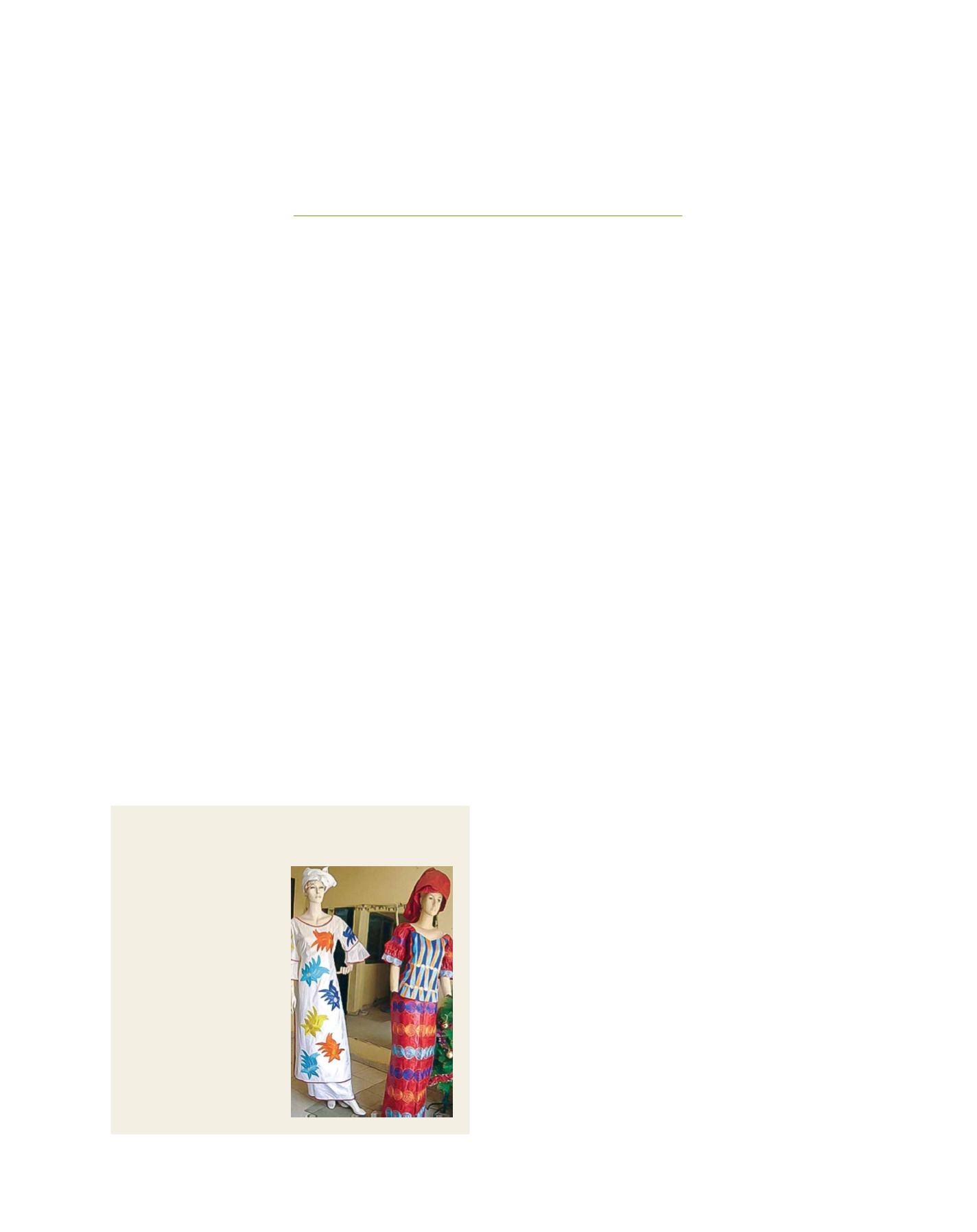

[
] 80
Empowering women
through Islamic finance
Kristonia Lockhart, Senior Gender Specialist, Social Capacity
Development Division, Islamic Development Bank
A
t the dawn of the new millennium, the international
community has embarked on a new global agenda.
The many lessons learned over the past 15 years
during the Millennium Development Goals era have been
transformed into an even more ambitious agenda with
aspirations for a more equitable and human-centric develop-
ment. The Sustainable Development Goals (SDGs) adopted
in September 2015 by world leaders have changed the narra-
tive from reducing extreme poverty to ending it, with greater
attention to sustainable development.
To successfully realize the SDGs in a timely manner, certain
prerequisites have to be met. Among the critical issues to be
addressed, financial stability, financial inclusion and shared
prosperity stand out.
The poor are socially excluded; they find themselves voice-
less and powerless. These are key determining factors of
poverty and material deprivation as indicated by their lack of
access to livelihood opportunities. The concept of social exclu-
sion is complex and multifaceted. It refers to individuals and
societies and to disadvantages, alienation and lack of freedom.
It is manifested both formally, through laws and government
institutions, and informally, through community and familial
relations. In poor societies, economic exclusion is at the heart of
the problem. When people are excluded from the main source
of income, their first priority is survival and a basic livelihood.
The size of the financially excluded population is enormous:
according to the United Nations approximately 3 billion people
lack access to formal financial services such as bank accounts,
credit and insurance.
While both men and women face similar barriers to access
finance, evidence suggests that these barriers are higher for
women. Discriminatory social norms and unequal social
and economic structures have led to women and girls being
disproportionately represented among the world’s poor. The
reasons for this include culture, lack of traditional collateral,
women’s lower income levels relative to men, and financial
institutions’ inability to design appropriate products and
outreach strategies to reach women.
Furthermore, in Muslim majority countries there is faith-
compounded financial exclusion. An estimated 72 per cent of
people living in Muslim majority countries do not use formal
financial services even when they are available. Some people view
conventional products as incompatible with the financial prin-
ciples in Islamic law. Islamic finance has gained traction around
the world over the years. It links finance with the real economy
in a substantial way and maintains the link at each point in time
in a fair and transparent manner.
Islamic finance offers promising potential solutions in these
critical domains. In fact, the major financial areas Islamic finance
has contributed to – namely financial stability, financial inclu-
sion and shared prosperity – could be instrumental in ending
poverty, achieving food security, ensuring healthy lives, achiev-
ing gender equality and promoting peaceful and inclusive society.
Additionally, innovative Islamic financial instruments especially
for infrastructure development, such as Sukuk, the Islamic equiv-
alent of bonds, can also be used to mobilize resources to finance
water and sanitation projects, sustainable and affordable energy,
and to build resilient infrastructure and shelter.
The Islamic Development Bank (IDB) Group is a multilateral
institution aiming to promote comprehensive human develop-
ment, with a focus on the priority areas of alleviating poverty,
improving health, promoting education, improving governance
and prospering the people. IDB is striving to promote Islamic
finance, including Islamicmicrofinance, amongmember countries
to enhance financial inclusion and empower low-income families.
IDB has extended Islamic lines of financing for the establish-
ment of Islamic microfinance institutions in member countries
and non-member countries under its Technical Support Program
Guinea: producing traditional clothing
A young Guinean woman saw an
opportunity to provide traditional
clothing to the wealthy. She
started her own boutique by
importing fabric and accessories
from France and Germany and
tailor-making garments for
her local clientele. She started
with her own resources and
bought three sewing machines.
As demand grew, she turned
to Crédit Rural de Guinée to
provide financing amounting to
GF30 million, to purchase and
negotiate the price for additional
sewing machines and employ a
few tailors. Today her business
has grown to GF90 million and
she employs 15 people.
Image: IDB
A B
etter
W
orld
















